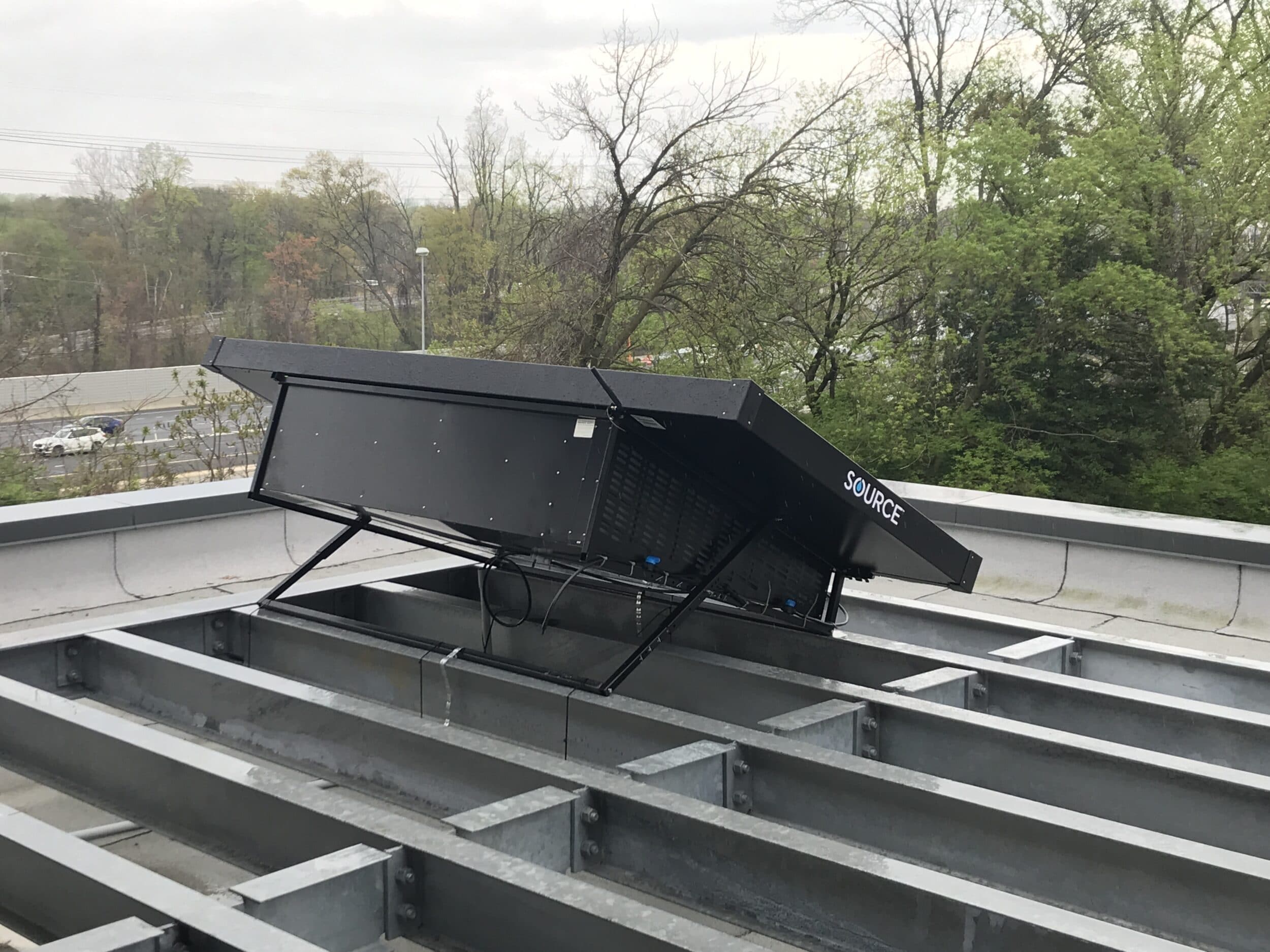
| Aug 25, 2021
SOURCE Hydropanel
Sourcing potable water in certain geographical areas or construction scenarios can be a tricky, yet essential, task. Remote locations, pre-utility installation jobsites, and in-building rainwater harvesting systems can present enormous challenges in the face of nonexistent electric or water supply.
After researching market solutions that address this issue, HITT R&D discovered SOURCE Global, PBC, an Arizona-based company that offers a solar-powered, infrastructure-free drinking water solution. The SOURCE Hydropanels are powered by a combination of solar photovoltaics and high-efficiency solar thermal. The system first extracts water vapor from the humidity in the atmosphere, then passively condenses the vapor into liquid, mineralizes the water, and ultimately, delivers safe water directly to a tap or faucet inside the building.
Testing on the roof of Co|Lab, the Hydropanel took only a few hours to install and commission. Within a few days, the system was flushed and ready for use.
Implications
The SOURCE Hydropanel presents an intriguing opportunity for commercial building applications in remote settings and pre-utility jobsites. The Hydropanel offers a potential alternative to reliance on public utility as it could provide onsite workers access to a self-renewing supply of fresh drinking water without electricity or pipes. It could also avoid the logistics and cost of trucking in potable water. As building owners seek ways to generate more resilient building operations, alternative technologies such as this offer a potential opportunity to provide necessary drinking water without reliance on traditional sources.
Considerations
This approach is not without challenges, however. In order to be completely feasible for in-building installation, building codes must be taken into account and addressed. SOURCE provides a centralized monitoring platform to ensure this avenue meets water quality standards, but partnering with municipalities will be critical for mass implementation. Application in new construction versus existing buildings should also be considered, as infrastructure on existing buildings may present obstacles to proper installation. As the Hydropanel’s optimal position is typically on a roof (for example), a building’s surrounding rooflines, treelines, and other obstructing features may also present additional challenges that need to be addressed.
Next Steps
HITT plans to investigate SOURCE Hydropanels as a possible alternative to rainwater harvesting in buildings, while providing potable water, in addition to remote jobsite applications. We will evaluate production capacity, weather implications, taste, and associated costs as part of these efforts.

